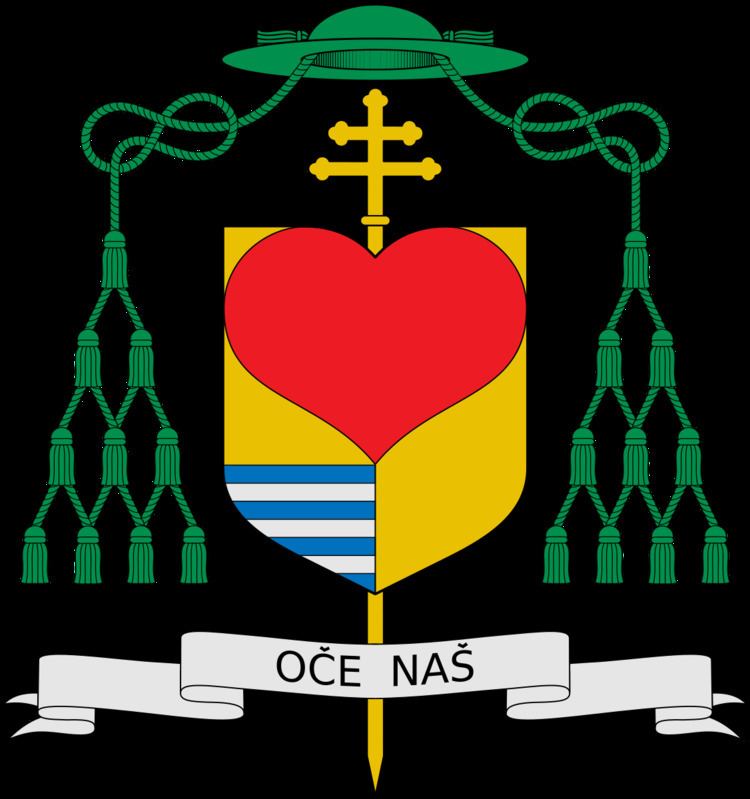Area 4.088 km² | Denomination Roman Catholic Established 3rd century Phone +385 21 407 501 Metropolitan archbishop Marin Barišić | |
 | ||
Population- Total- Catholics (as of 2010)468,801437,989 (93.4%) Hours Closed now Tuesday9AM–1PMWednesday9AM–1PMThursday9AM–1PMFriday9AM–1PMSaturdayClosedSundayClosedMonday9AM–1PMSuggest an edit Similar Autobusni kolodvor Split, Promet doo Split, Autobusni kolodvor Split, Osnovna škola Ravne Nji, Apartments Znjan | ||
The Roman Catholic Archdiocese of Split-Makarska (Croatian: Splitsko-makarska nadbiskupija; Latin: Archidioecesis Spalatensis-Macarscensis) is a Metropolitan archdiocese of the Latin Rite of the Roman Catholic church in Croatia and Montenegro. The diocese was established in the 3rd century AD and was made an archdiocese and metropolitan see in the 10th century. The modern diocese was erected in 1828, when the historical archdiocese of Salona was combined with the Diocese of Makarska. It was elevated as an archdiocese and metropolitan see in 1969, restoring the earlier status of the archdiocese of Split, as it is also known. The diocese was also known as Spalato-Macarsca.
Contents
The current archbishop is Marin Barišić.
History
The see was founded in or before 300 AD as Diocese of Salona. Eastern Roman Emperor Leo I (r. 457-474) appointed Glycerius as Bishop of Salona in 474, Glycerius had earlier served as Western Roman Emperor but was deposed by Julius Nepos. Around 500 AD it was promoted to a Metropolitan archdiocese.
The Archbishopric of Spalathon or Spalatum (also Salona, Latin: Spalatum) was a Christian archbishopric with seat in Salona (modern Split), Dalmatia (modern Croatia) in the early Middle Ages. It recognized the supremacy of the Patriarch of Constantinople rather than the Roman Pope. In 590 the Salona archdiocese gained territory from the suppressed Roman Catholic Diocese of Makarska.
Salona was ravaged by the South Slavs (Sclaveni) in 614, but in its place, Spalatum subsequently emerged. In 639 the city was razed by the Slavs, and in 647 the city was rebuilt.
In 647 the city of Spalato (now Split) began to arise from the ruins of Salona, and after an interregnum of eleven years its archbishops took over the territory of the archbishops of Salona. In 639 Salona was destroyed by the Slavs.
During the rule of Vladislav of Croatia (821-835), all of Croatia except the Archdiocese of Nin became subject to the Patriarchate of Constantinople, under the jurisdiction of the Archbishopric of Spalatum. It lost territory in 1144 to establish the Diocese of Hvar.
It lost territory again in 1344 to re-establish the Roman Catholic Diocese of Makarska, in 1400 it regained that territory from the re-suppressed the Diocese of Makarska, but again lost territory in 1615 to re-re-establish the Diocese of Makarska.
With the death of Archbishop Laelius Cippico (1807) began another interregnum which lasted twenty-three years. By papal bull Locum Beati Petri the Church in Dalmatia was reorganized in 1828, Makarska united with Split, and the latter demoted as a simple bishopric of Split-Makarska, made subject to the Archdiocese of Zara. Paul Miossich was appointed first bishop of the new diocese in 1830. It also absorbed the suppressed Tragurium (or Traù, now Trogir).
On 27 July 1969, it was promoted again as Metropolitan Archdiocese It enjoyed a papal visit from Pope John Paul II in October 1998.
Special churches
Its cathedral episcopal see is the Cathedral of Saint Domnius (Katedrala sv. Dujma), in Split (Dalmatia). The city also has the co-cathedral of Saint Peter Apostle (Konkatedrala sv. Petar Apostola).
There are former cathedrals in three former sees aborbed in the archdiocese:
Ecclesiastical province
Its suffragans are the Diocese of Dubrovnik (Ragusa), Diocese of Hvar-Brac e Vis, Diocese of Kotor (Cattaro) and the Diocese of Šibenik (Knin).
Episcopal Ordinaries
(all Roman Rite; many bio-data to be added)
Known bishops of Salona include :
Archbishop Honorius III conducted a synod in 530; Natalis at a Council in 590, unjustly deposed his archdeacon Honoratus, but pope Gregory the Great took the latter's part.
Out of the long series of its seventy-nine archbishops may be mentioned St. Rayner (d. 1180), and the unfortunate Marcus Antonius de Dominis, who was deprived of his office after having filled it for fourteen years and died an apostate at Rome in 1624; Thomas, who resigned his office voluntarily (thirteenth century), is the author of a history of the bishops of Salona and Spalato.
